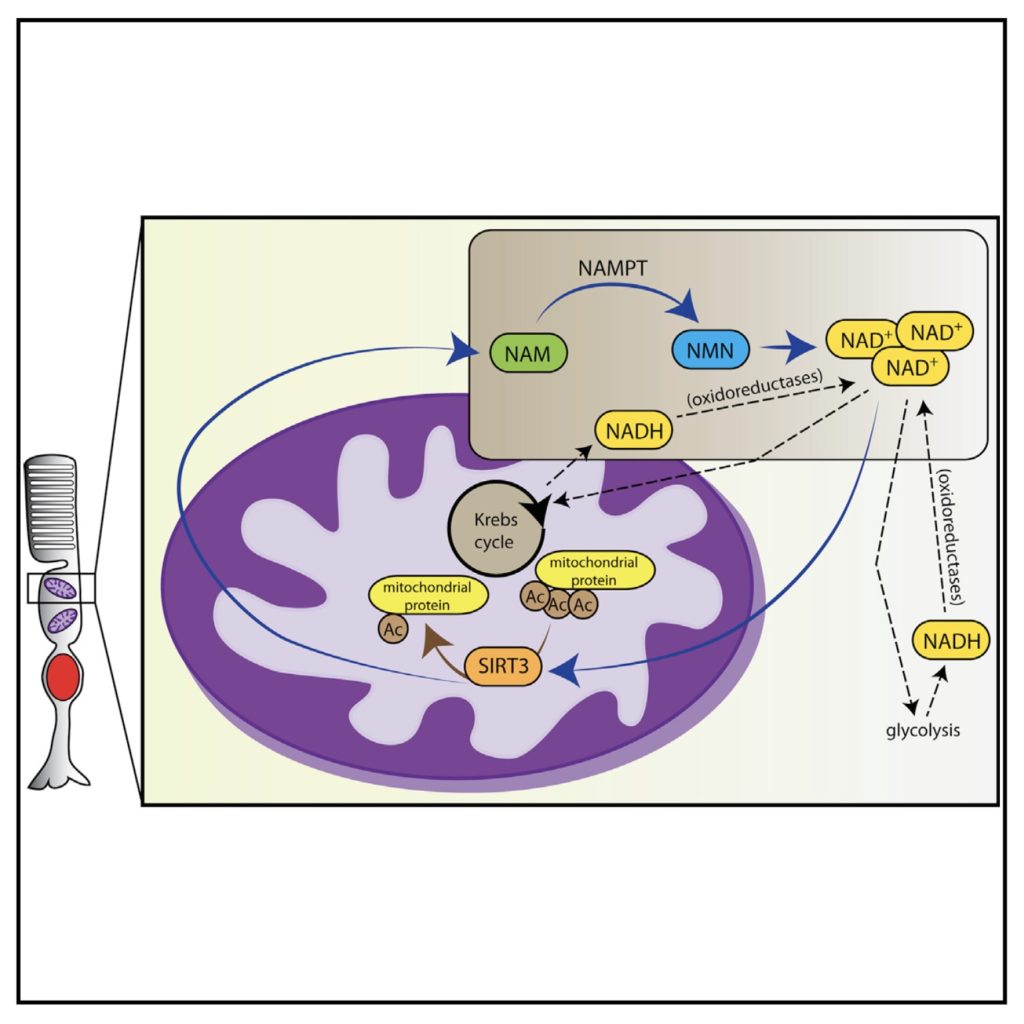NAD+ is Essential for Vision in Mice
The loss of NAD+ levels leads to rapid neurodegeneration in the eye and the loss of vision, but scientists discovered that replenishing the molecule can prevent the adverse effects and restore vision.
Your eye is a piece of delicate machinery that allows you to appreciate the scenery and detect danger from the world. In healthy individuals, light enters the pupil and lands on the retina at the back of our eye, forming images.
How the Retina Enables Vision
The retina is composed of two kinds of photoreceptors: rods and cones. Rods mediate vision at low light and are sensitive to motion, enabling us with “night vision.” Under sufficient light, cones allow us to see the world in detail and give us “color vision.” Together, the two photoreceptors facilitate us navigating the world and without them, our world goes dark.
Photoreceptors are terminally differentiated and non-proliferative, their death leads to blindness, a final result that many blinding diseases share. Scientists from Washington University School of Medicine, St. Louis discovered a molecule essential for vision in mice — nicotinamide adenine dinucleotide (NAD+) — and replenishing it can prevent photoreceptor degeneration and restore vision.

“Once successfully implemented, this treatment strategy would be far-reaching,” wrote the authors of the study. “Since it could be implemented for multiple diseases with diverse pathogenic mechanisms, including not only inherited forms of retinal degenerations but also other blinding diseases characterized by a final pathway of photoreceptor death such as [age-related macular degeneration] and diabetic retinopathy.”
The Role of NAD+ in Retinal Health
The retina starts working to process information the moment we open our eyes. The tissue has one of the highest energy demands in the body, relying heavily on the function of mitochondria, where NAD+ plays a critical role in the organelle to churn up energy.
When the researchers disrupted NAD+’s biosynthesis pathway in mice rod cells, they discovered a 43 percent reduction in NAD+ levels compared to normal animals. They also found that mitochondria in NAD+ deficient rod cells have defects. Instead of looking like a jelly bean with folds created by the inner membrane, the faulty mitochondria lost its folds and appeared round and constricted.

Representative electron microscopy images of retinas from 4-week-old Nampt-rod/-rod mice revealed mitochondria that are rounded, disorganized, and with loss of cristae (inner membrane folds) compared to those from NamptF/F mice. (Lin et al., 2016)
NAD+ Deficiency Leads to Retinal Degeneration
Hindered NAD+ biosynthesis also led to severe signs of retinal degeneration, including vascular attenuation and optic nerve atrophy — the blood vessels in the eye narrows and nerve cells are damaged. Besides rapid neurodegeneration, the mice with NAD+ deficiency can’t see as well as normal ones.
However, restoring NAD+ with nicotinamide mononucleotide (NMN), a booster of NAD+ levels prevented photoreceptor degeneration and restored vision in mice. The team injected NAD+-biosynthesis-compromised mice with NMN for four weeks and found significant recovery in retinal function compared to those that did not receive treatment. NMN treatment rescued retinal degeneration by preventing the loss of retinal tissue.
A reduction in retinal NAD+ levels is a shared trait across retinal degenerative conditions such as light-induced degeneration, aging and diabetic retinopathy, a diabetes complication caused by damage to the retina blood vessels. The researchers gave healthy mice NMN injections before and after exposing the animals to light that induces retinal degeneration. Mice that received treatments were more resilient against light exposure and retained retinal function compared to those untreated.
“These findings suggest that the NAD+ deficiency associated with retinal disease can indeed be rescued by NAD+ intermediates such as NMN,” the authors wrote. “Further supporting the possibility of using NAD+ intermediates to treat retinal degenerative diseases.”

Although further studies are necessary to explore the precise connections between the metabolic pathways and extend the findings to humans, the researchers note that NMN interventions may expand beyond treating blinding diseases.
“Given the global importance of NAD+ biosynthesis and mitochondrial dysfunction in neurons, our findings may also be broadly relevant to other systemic neurodegenerative diseases such as Alzheimer’s disease, where NAD+ intermediate supplementation may be neuroprotective,” wrote the authors.

